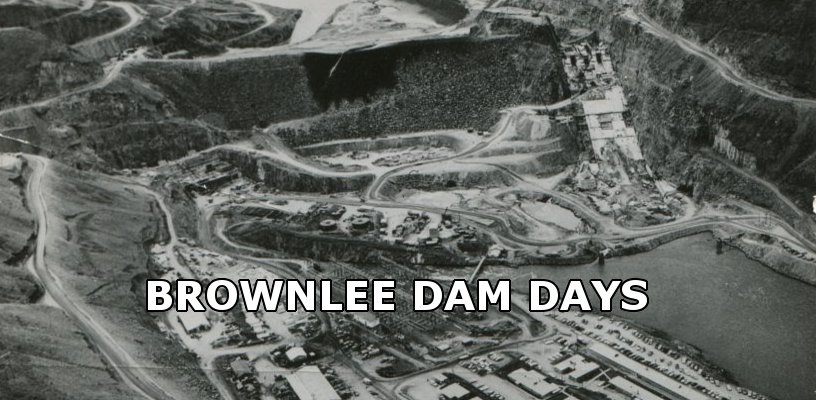Back to Home Page
Why is this section listed under 'Sagebrush Hills Fun'? You will see later if you look closely.
I always had trouble making enough money to continue my Electrical Engineering studies at the University of
Idaho.
In 1956, while working at my summer job with Potlatch Forest Inc. (PFI) as a dozer operator, Justine and I
(and baby Steve) were living in a tiny trailer house on a gravel bar alongside the Clearwater River near
where I was running a Caterpillar D-9 dozer clearing and shaping the site for a huge new log landing.
We could see that we hadn't saved enough to get back to school that fall. So I continued working for PFI
until they closed operations for the season in early November.
We moved back to Payette and I was fortunate to get a job with Idaho Power who were getting well underway
with their ambitious plans to build 3 hydroelectric dams on the Snake River at the south end of Hells Canyon
starting with one at Brownlee just a few miles below the site of the historic
Brownlee Ferry.
The Duncan family had an earlier connection with the Brownlee area. As a young man of about 20 my Dad,
Jay W. Duncan, while living at the family home in Cambridge, Idaho had worked at a ranch at Brownlee
(on the Idaho side). Dad told a favorite story about his time working at this ranch and I still have a
picture from this period.
Click for the picture and story.
I started out with Idaho Power as a rodman on a survey crew whose task was to establish all the property
lines of land owners that would be impacted by the reservoir that would eventually build up behind the
completed dam. This was hard, cold work during the winter of 1956-57 but I relished it because I loved
being outdoors wandering around those sagebrush covered hills trying to dig in the right spot to find
those survey markers - usually rocks with notches filed or chiseled on their corners. The original surveys
had been done in the early 1900's and it was quite exciting when we were able to locate those markers that
had been buried over a half century earlier.
-More to come-
Back to Top

